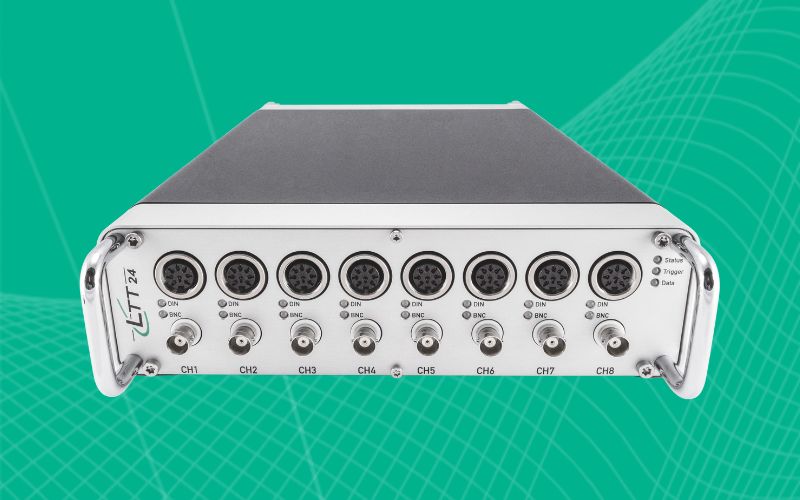

Learn how a transient recorder works, understand the differences between it and other measurement systems, and find out which criteria are decisive for selection.
In order to understand what a transient recorder is and what it is used for, we first need to understand ‘transient events’.
Transient events are short-term, abrupt changes in electrical quantities (typically voltage, current or power) that lie outside normal operating behaviour. They often occur as a result of switching operations, faults, overvoltages or interference.
A transient recorder (also known as an event recorder) is a specialised measuring device for recording transient (i.e. very fast, short-term electrical) events with high temporal resolution. It detects sudden changes in current, voltage or power and stores them for later measurement data analysis.
A transient recorder and an oscilloscope are both used to capture electrical signals, but they are optimised for different applications. The transient recorder is specifically designed to record short-term, unpredictable events, such as those that occur during power grid disturbances or high-voltage events. It scores with a very high sampling rate (typically 1–10 MS/s per channel), a long recording time (several seconds to minutes), large memory depth (e.g. via SSD), and comprehensive trigger functions. It also offers galvanic isolation as standard, making it ideal for high-voltage and industrial applications. Data evaluation is also often automated and integrated via specialised software.
An oscilloscope, on the other hand, is particularly well suited for repetitive or continuous signals. Although modern devices are equipped with extremely high sampling rates (often >1 GS/s), the recording time is usually significantly shorter because the internal memory (RAM) quickly reaches its limits. The trigger functions are also powerful, but are designed more for real-time display on the screen. Galvanic isolation is usually not provided. Therefore, oscilloscopes are more intended for laboratory use, as they are less robust against electromagnetic interference.
The selection of the right measuring device for recording transient events depends heavily on the area of application, particularly on the type of signals, the measuring environment and the requirements for accuracy and safety.
As a general rule, the transient recorder should be selected based on the respective measurement task in order to ensure full functionality and to be able to perform high-quality measurements.
Modular transient recorders are particularly practical in this regard: they can be flexibly adapted to any measurement task, which means that even if conditions change, upgrading is usually not a problem.
The LTT24 from Labortechnik Tasler is a perfect example of flexible modularity and robustness. Already proven in a wide range of applications, the LTT24 offers high reliability with maximum precision and synchronisation.
With over 25 years of experience in precision measurement technology, Labortechnik Tasler GmbH is the number one contact for any measurement task that needs to be mastered. Contact us and we will be happy to advise you – together we will find the optimal solution for every measurement challenge!

The LTTpro measurement data acquisition software is ideal for the demanding measurements of transient recorders. The software is capable of displaying measurement data in real time and analysing it using a wide range of mathematical functions.
And the best thing? The software even comes without drivers!
Find out more about LTTpro